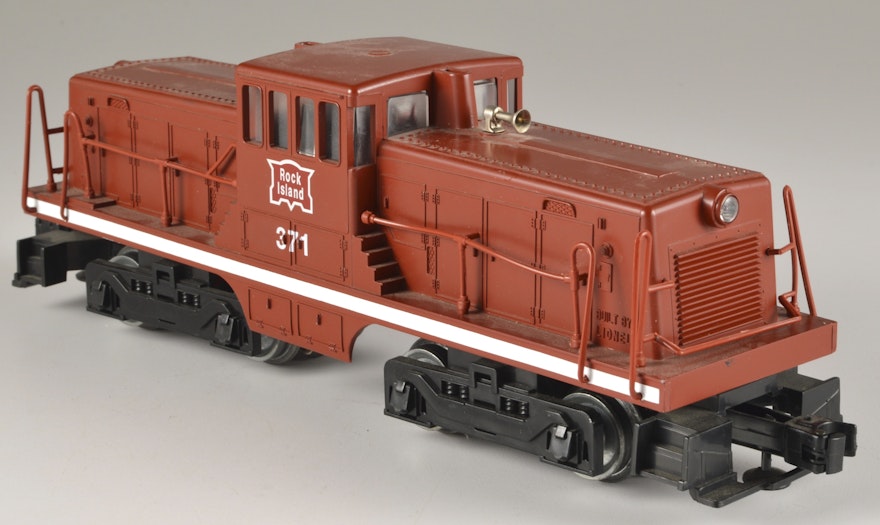It has transverse-mounted can motors in the trucks, same as other modern era Lionel O-27 diesels. Can't remember if it is one motor or two (mine is packed away at the moment).
This model is the same size as Lionel's postwar 44-tonner, which many jokingly call an "88-tonner" because it is grossly oversized. (GE did make a center-cab 90 ton locomotive, and this is about an inch too long even for that).
According to thedieselshop.us, the Rock Island never owned a GE 44-ton switcher, but it did have a handful of similar-looking switchers built by Whitcomb, numbered 367-371. (It's little touches like that -- wrong everything, but went through the trouble to look up a prototypical cab number -- that I find so endearing in this era of Lionel production.)
